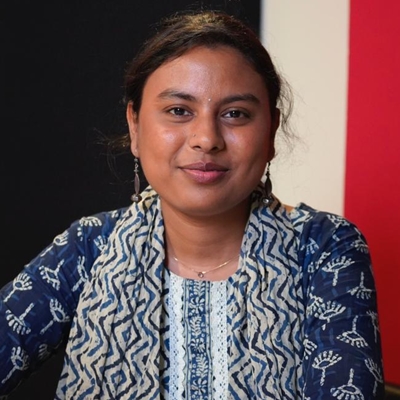IIM Shillong is now focusing on increasing its intake of students from 600 to 1,000 to enhance the Gross Enrolment Ratio, a goal set by the new National Education Policy (NEP), IIM Shillong director DP Goyal told The Indian Express in an interview. He is not worried about the large-scale tech layoff in the US and the impact it could have on placements in India this year. Goyal spoke to The Indian Express about his priorities for the institute, efforts to expand the student strength, and how the IIM Act has given them the freedom to achieve more in higher education.
Edited excerpts:
Q. You were appointed director in 2019 and in less than a year we were hit by the pandemic. What were your priorities for IIM Shillong when you took over as director and how did you have to tweak those amid the disruption caused by the pandemic?
The priority was to shift to the new campus. We started in 2008, but until 2019, we were operating out of a small campus of six acres; of course, it’s a beautiful campus. But this restricted our intake. My second goal was to focus on increasing the intake and starting new programmes.
Of course, because of Covid-19 pandemic, there was a delay of about six to seven months in shifting to the new campus since we had to volunteer 258 rooms for the Covid recovery centres. As an IIM, we cannot continue having the same old management programmes with a small numbers of students. Year after year, we are gradually increasing the numbers by adding more classroom sections to each course. We are also focusing on expanding our hostel infrastructure.
Another goal was to gain international accreditation, which got delayed by six months. It is now underway and will be awarded soon.
Q. Are there certain milestones or goals you think you won’t be able to achieve during your term?
It’s a continuous process, and of course, I won’t be able to achieve all the goals during my tenure that I had envisioned. We want to be triple-crowned and this cannot be achieved in four or five years. The triple crown accreditations include the Association to Advance Collegiate Schools of Business (AACSB), the Association of MBAs (AMBA), and the EFMD Quality Improvement System (EQUIS).
This good news might come in the next director’s tenure. Any director would wish a minimum of one-third of the institute’s students to go for foreign exchange to encourage peer learning. We started the exchange programmes last year, where we sent two students to the University of Wollongong.
Q. The government is planning to invite foreign universities to set up campuses in India. What do you think of this plan? Should Indian higher education institutions feel threatened or worried?
I feel like it’s just a mindset where we just fear something. Earlier, we said if malls came, then smaller shops would not survive; with IT many other jobs would not be there. At IIMs, we focus on quality. Once we say IIMs for excellence, and IIMs for quality, why should we feel threatened? Rather, we should all compete in a healthy way. And we all know that Indians, wherever we go, can compete with anybody. You will find Indians in all top companies worldwide. As far as competence is concerned, one cannot beat Indians. So we should not worry about that at all.
Q. IIMs don’t reserve faculty positions despite several reminders from the government on the same. Why have IIMs stayed away from fulfilling this constitutional obligation?
IIM Shillong is following all rules regarding reservations and we have conducted nine recruitment drives highlighting reservations for SC/ST in the last four years. It is very clearly mentioned in every advertisement we put out that the recruitment drives are for SC/ST/OBC and EWS too. We are also putting the numbers of faculty recruited under these categories on our website. We have filled a good number of candidates for these positions.
Q. The new National Education Policy lays emphasis on multidisciplinarity. Some of the IITs have started embracing this by introducing more flexibility in their programmes and even scaling up their humanities (and management) departments. Are the IIMs open to adopting the multidisciplinary approach? If yes, how is IIM Shillong planning to do it?
We are in the process of introducing new collaborative courses with the National Law University in Shillong. We are thinking of an MBA in judiciary infrastructure management. This is at an initial stage right now. We are already planning to collaborate with IIT Guwahati and AIIMS Guwahati to have a few courses like management in healthcare and administration.
MBA is not only for corporations. We found that doctors are not taught to manage and this could benefit those who work at corporate hospitals. NEP is a wonderful policy and we are exploring these multidisciplinary options. We are flexible as our students can pick up any course from anywhere and we will accept it and credit it.
Q. New NEP also speaks of doubling Gross Enrolment Ratio. IIMs educate a much smaller number of students compared to other Institutes of National Importance. Is IIM Shillong planning to ramp up its enrolment numbers to align with the GER goal of the new NEP? If yes, then how?
Goyal: It did not happen with 180 students. Our priority is to bring in more numbers and currently, we are focusing on building more and more hostels as this is a residential programme. We are aiming for 500 more hostel accommodations so that we can contribute and admit more students. So very soon, we should have about 1,000 students on campus. Currently, we have 600.
Q. How has the IIM Act made a difference to IIM Shillong?
The IIM Act was a very good step as it is helping education transform the way it should. The Act provides administrative and financial autonomy. The board is totally empowered and if we want to make decisions like increasing the number of faculty seats, the board’s approval is all that we require. We don’t have to wait longer for the government’s approval. It becomes easier to evolve.
Q. As an academician, are you bothered about ChatGPT and its impact on learning and teaching and assessments?
Not at all. For instance, let’s take Google. Google came and students used to copy from Google and submit assignments but then we got a solution like a plagiarism check for that. ChatGPT also has a solution where certain software tells you whether you have prepared a paper from ChatGPT. We, humans, are equally competent to have solutions for technology as well. Many more like ChatGPT will come, but these can’t threaten a teacher. For a teacher, anyone can copy my content, but my delivery, my pedagogy, my style, and my hard work can’t be threatened by technology.
Q. Are you worried about layoffs across tech giants in the US? What impact do you think it will have on the placements at your institute and how is it planning to insulate itself?
There has been an increase of 17% in placement this time. We also got very good pre-placement offers and pre-placement interviews. And so far, all is good. Even during Covid, we were lucky as we did not have any disruptions in our placements. The increase in CTC also ramped up during the pandemic placements.
Q. The IIM classroom has been mostly dominated by engineers. IIMs have tried breaking this pattern in the past but it hasn’t changed the composition drastically. Why do you think that happens? Have candidates of engineering background cracked the CAT pattern? Or is it just a function of engineers making up the majority of the applicant pool?
It is said that CAT is designed in a way which is more favourable toward engineers. But with every passing year, things are changing. The trend of the CAT exam pattern is changing and new policies are also additionally helping more students from diverse backgrounds get a chance to study at IIMs. For instance, engineers may not be as good at writing skills as compared to mathematics. Analytical and writing skills are also being given preference. You will find fewer engineers than you used earlier in the top 20 ranks.

 Vidheesha KuntamallaVidheesha Kuntamalla covers Education in Delhi for The Indian Express…. read more
Vidheesha KuntamallaVidheesha Kuntamalla covers Education in Delhi for The Indian Express…. read more
02 8005 6525
info@aktengineering.com.au

Recent Comments